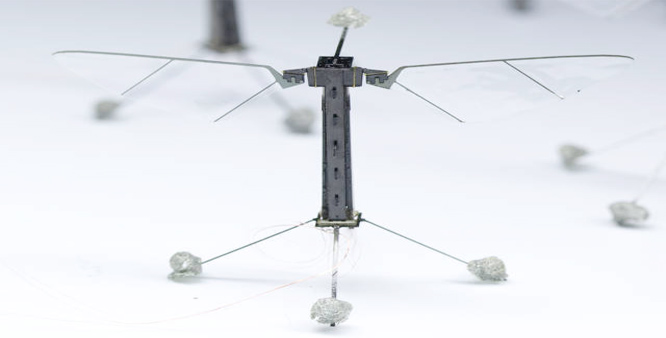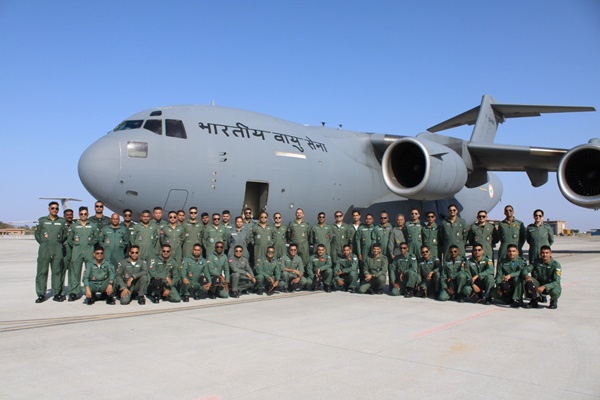First insect-size robot that can fly, swim
Mon 26 Oct 2015, 14:00:50

Washington: For the first time, scientists have designed an insect-like robot smaller than a paperclip that can both fly and swim - paving the way for future dual aerial aquatic robotic vehicles.
The biggest challenge is conflicting design requirements: aerial vehicles require large airfoils like wings or sails to generate lift while underwater vehicles need to minimise surface area to reduce drag.
To solve this engineers at the Harvard University's John A Paulson School of Engineering and Applied Science (SEAS) took a clue from puffins.
The birds with flamboyant beaks are one of nature's most adept hybrid vehicles, employing similar flapping motions to propel themselves through air as through water.
"Through various theoretical, computational and experimental studies, we found that the mechanics of flapping propulsion are actually very similar in air and in water," said Kevin Chen, a graduate student at the Harvard Microrobotics Lab at SEAS.
The RoboBee, designed in postdoctoral fellow Robert J Wood's lab, is a microrobot, smaller than a paperclip, that flies and hovers like an insect, flapping its tiny, nearly invisible wings 120 times per second.
In order to make the transition from air to water, the team first had
to solve the problem of surface tension. The RoboBee is so small and lightweight that it cannot break the surface tension of the water.
To overcome this hurdle, the RoboBee hovers over the water at an angle, momentarily switches off its wings, and crashes unceremoniously into the water in order to sink. Next the team had to account for water's increased density.
"Water is almost 1,000 times denser than air and would snap the wing off the RoboBee if we didn't adjust its flapping speed," said graduate student Farrell Helbling, the paper's second author.
The team lowered the wing speed from 120 flaps per second to nine but kept the flapping mechanisms and hinge design the same.
A swimming RoboBee changes its direction by adjusting the stroke angle of the wings, the same way it does in air. Like a flying version, it is still tethered to a power source.
The team prevented the RoboBee from shorting by using deionised water and coating the electrical connections with glue.
While this RoboBee can move seamlessly from air to water, it cannot yet transition from water to air because it can't generate enough lift without snapping one of its wings. Solving that design challenge is the next phase of the research, according to Chen.
No Comments For This Post, Be first to write a Comment.
Most viewed from Specials
Most viewed from World
AIMIM News
Latest Urdu News
Most Viewed
May 26, 2020
Do you think Canada-India relations will improve under New PM Mark Carney?
Latest Videos View All
Like Us
Home
About Us
Advertise With Us
All Polls
Epaper Archives
Privacy Policy
Contact Us
Download Etemaad App
© 2025 Etemaad Daily News, All Rights Reserved.





















.jpg)
.jpg)
.jpg)
.jpg)

















